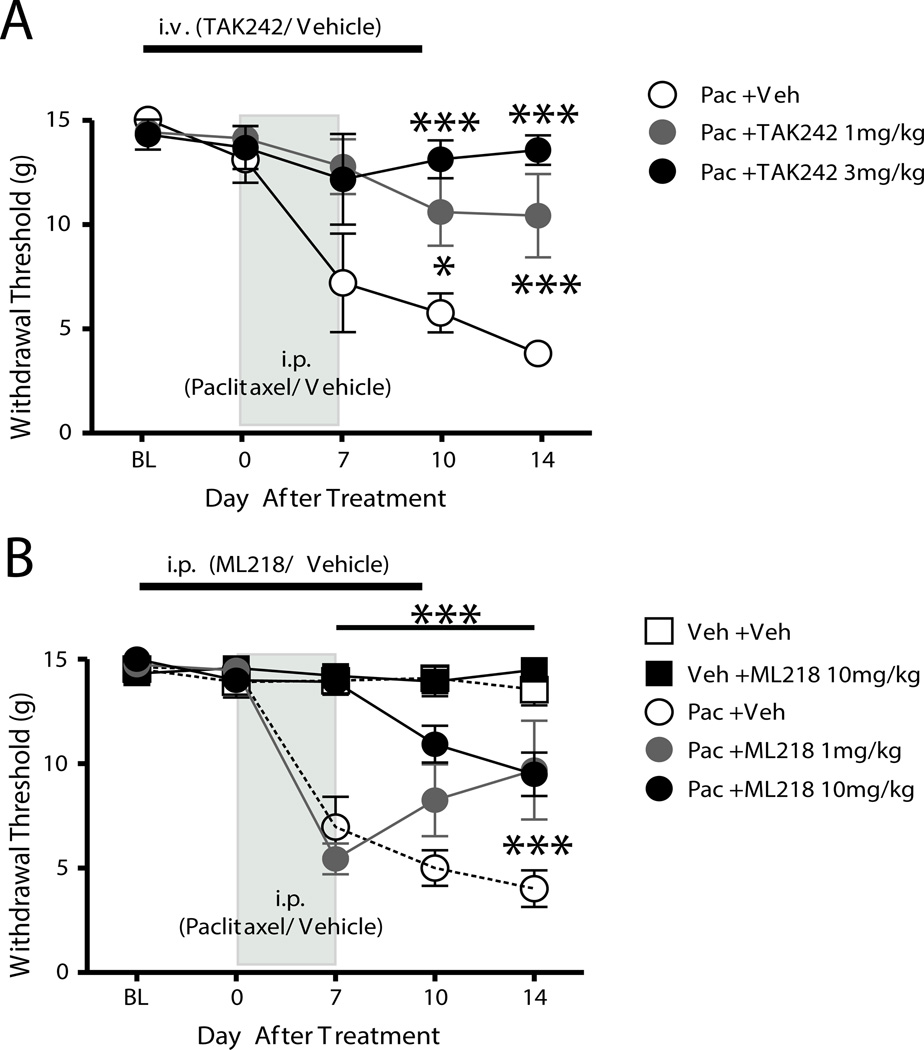Figure 7.
Prevention of paclitaxel-induced neuropathic pain in rats by application of the TLR4 antagonist TAK242 and Cav3.2 blocker ML218 hydrochloride. After a baseline (BL) behavioral test, rats received paclitaxel (Pac, 2.0mg/kg, i.p., every other day X4). A, Rats received daily treatment with 1 (filled gray circles) or 3 mg/kg (filled black circles) TAK242 (i.v.) or PBS vehicle (Veh, open circles) beginning 2 days before and continuing to 2 days after treatment with paclitaxel. The paclitaxel-TAK242 groups showed significant reduction in mechanical hypersensitivity compared with that in the paclitaxel-PBS group. B, Rats received daily treatment with 1 (filled gray circles) or 10 mg/kg ML218 hydrochloride (filled black circles) or PBS vehicle (Veh, open circles) beginning 2 days before and continuing to 2 days after treatment with paclitaxel or the paclitaxel vehicle (Cremophor, Veh). The paclitaxel-ML218 hydrochloride group exhibited marked partial reduction in mechanical hypersensitivity compared with that in the paclitaxel-PBS group. Vehicle-treated rats receiving PBS (open squares) or ML218 hydrochloride (filled black squares) showed no changes from baseline. The asterisks indicate significant differences between the paclitaxel-TAK242 and paclitaxel-ML218 hydrochloride groups to the paclitaxel-PBS vehicle group. *p < 0.05; ***p < 0.001.

